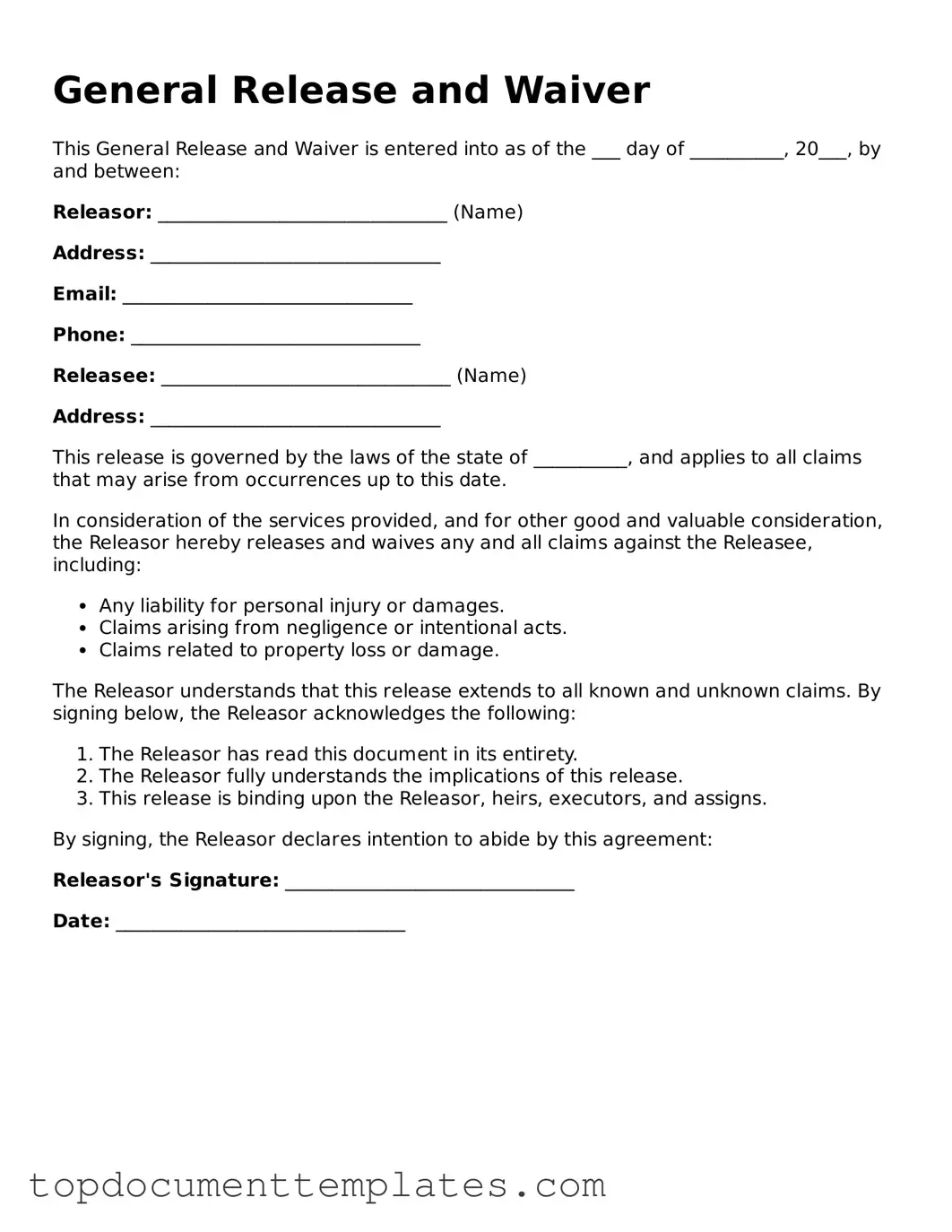The General Release and Waiver form serves as a crucial legal instrument that individuals and organizations utilize to mitigate potential liabilities. This form allows one party to relinquish their right to pursue legal claims against another party, effectively providing a layer of protection in various situations, such as contracts, event participation, or service agreements. By signing this document, the releasor acknowledges the risks involved and agrees to waive any future claims for damages or injuries that may arise. It is essential to understand that the General Release and Waiver not only protects the party receiving the release but also establishes clear boundaries regarding responsibilities and expectations. While the form is often straightforward, its implications can be significant, making it imperative for parties to consider the nuances of their agreement. Clarity in language and intent is vital, as ambiguity could lead to disputes down the line. Therefore, both parties should carefully review the terms before signing, ensuring that they fully comprehend the rights they are relinquishing and the obligations they are assuming.
